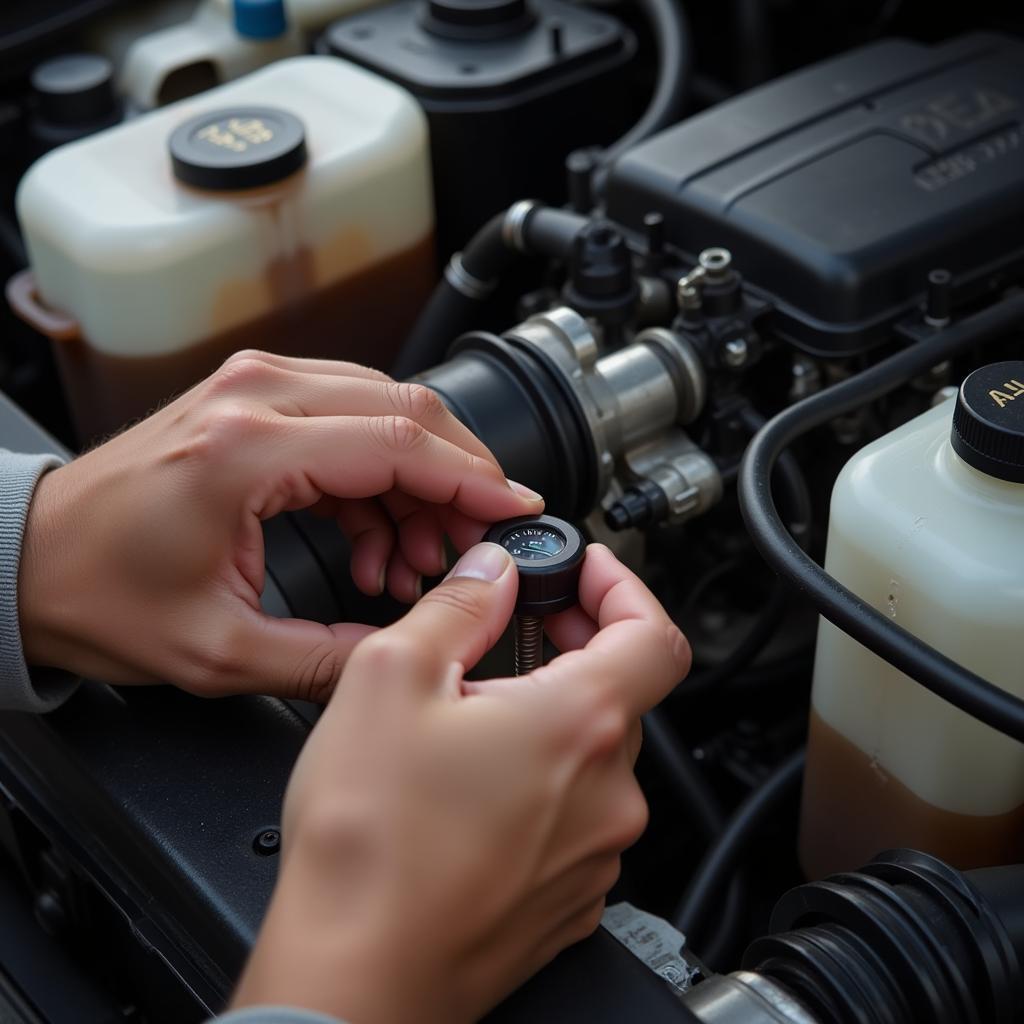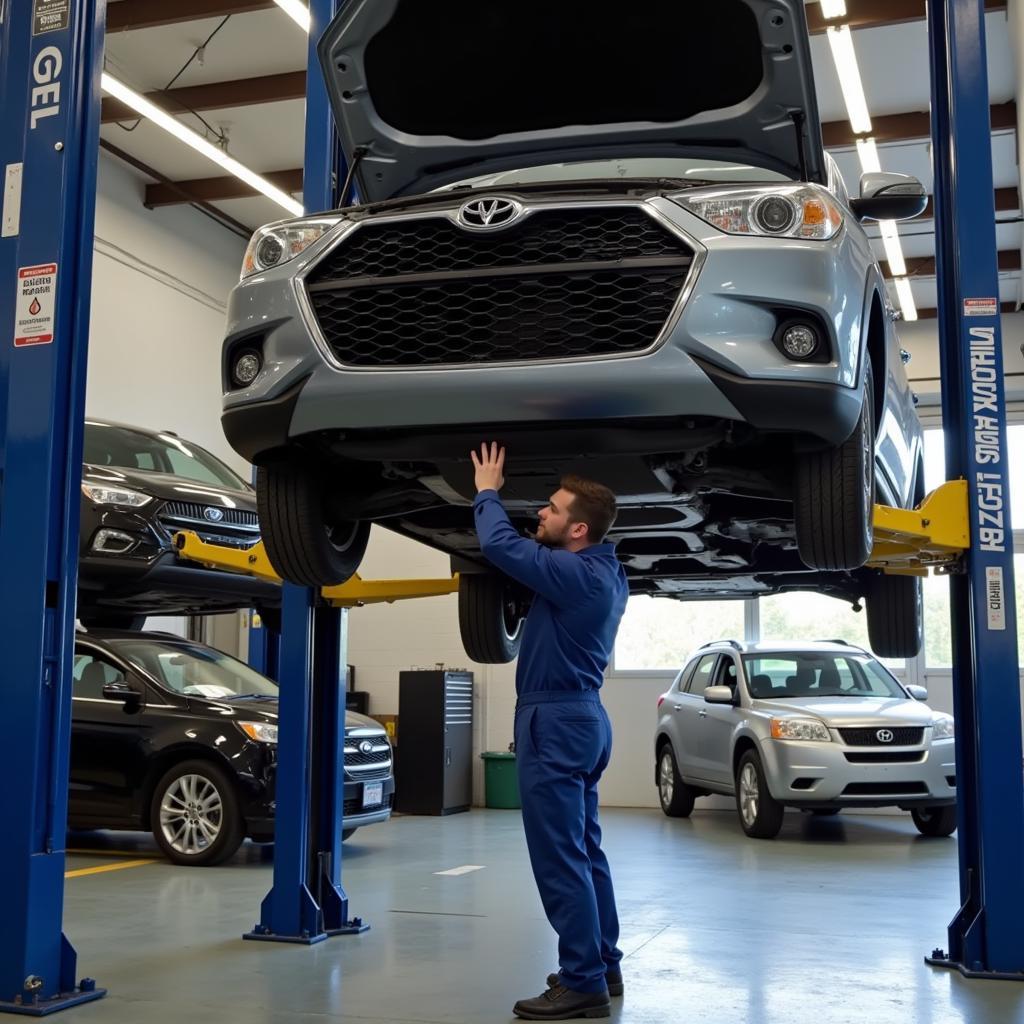What to Do After Car Service: Your Post-Maintenance Checklist
So, you’ve just had your car serviced – fluids topped up, filters changed, and maybe even a shiny new part or two. You’re probably eager to hit the open road, right? But hold your horses! Just like a doctor’s visit requires some follow-up care, your car needs some post-service TLC too.
This comprehensive guide will walk you through everything you need to know about What To Do After Car Service, ensuring your vehicle stays in tip-top shape for miles to come.
Why Post-Car Service Care Matters
Think of it this way: your mechanic has just given your car a clean bill of health. Your job now is to maintain that healthy state. Neglecting post-service care is like skipping your annual checkup – you might not notice any immediate problems, but you’re setting yourself up for bigger issues down the line.
By following a few simple steps, you can:
- Prolong the life of your vehicle: Regular maintenance already does wonders for your car’s lifespan, but taking those extra steps after a service can significantly enhance its longevity.
- Prevent costly repairs: Identifying minor issues early on can prevent them from snowballing into major (and expensive) problems down the line.
- Ensure optimal performance: A well-maintained car simply runs better. You’ll enjoy a smoother ride, better fuel efficiency, and improved overall performance.
- Stay safe on the road: Safety should always be a top priority. Post-service care ensures all systems are working correctly, reducing the risk of breakdowns or accidents.
Your Essential Post-Car Service Checklist
Now that you understand the “why,” let’s dive into the “how.” Here’s your essential post-car service checklist:
1. Review Your Service Records
Before you even leave the mechanic, take a moment to review your service records thoroughly. These records detail everything that was done during the service, including:
- Services Performed: This section lists all the tasks completed on your car, from oil changes to brake inspections.
- Parts Replaced: If any components were replaced, they’ll be listed here, along with their part numbers.
- Recommendations: Mechanics often include recommendations for future services based on your car’s condition. Pay close attention to these.
Expert Insight: “Don’t be afraid to ask questions about anything you don’t understand on your service record,” advises master mechanic John Smith, owner of Smith’s Auto Repair. “A good mechanic will be happy to explain everything in detail.”
2. Take a Short Test Drive
Once you’re behind the wheel, take a short test drive in a safe environment. This drive isn’t about sightseeing; it’s about paying close attention to how your car feels and sounds.
- Listen for unusual noises: Are there any new squeaks, rattles, or grinding sounds?
- Feel for any vibrations: Does the steering wheel shake, or do you feel vibrations in the brake pedal?
- Check the brakes: Do the brakes feel responsive, or do they seem spongy or slow to engage?
 Post-Service Test Drive
Post-Service Test Drive
If anything feels off, head straight back to the mechanic. It’s better to address potential issues immediately rather than waiting for them to become bigger problems.
3. Monitor Fluid Levels
Your mechanic should have topped off all your fluids during the service. However, it’s a good practice to double-check them yourself a few days later.
Here are the essential fluids to monitor:
- Engine oil: Use the dipstick to check the oil level and color.
- Coolant: The coolant reservoir usually has markings to indicate the proper level.
- Brake fluid: The brake fluid reservoir is typically located near the firewall on the driver’s side.
- Power steering fluid: Consult your owner’s manual for the location of the power steering fluid reservoir.
- Windshield washer fluid: Don’t forget to top off your washer fluid, especially if you’re heading into a season with inclement weather.
 Checking Car Fluids
Checking Car Fluids
4. Keep an Eye on Warning Lights
Modern cars are equipped with a dashboard full of warning lights. While your mechanic should have addressed any illuminated warnings during the service, it’s crucial to monitor them yourself in the days and weeks that follow.
Be on the lookout for:
- Check Engine Light: This light can indicate a wide range of issues, from minor sensor malfunctions to serious engine problems.
- Oil Pressure Light: If this light comes on while driving, pull over immediately and turn off your engine.
- Brake Warning Light: This light can signal low brake fluid, worn brake pads, or other brake system problems.
If any warning lights illuminate, don’t ignore them. Consult your owner’s manual and consider taking your car back to the mechanic for a diagnosis.
5. Schedule Your Next Service Appointment
Last but not least, don’t wait until another problem arises to schedule your next service appointment. Refer to your owner’s manual for recommended service intervals.
 Scheduling Car Service Appointment
Scheduling Car Service Appointment
Expert Insight: “Regular maintenance is the key to keeping your car running smoothly and avoiding costly repairs,” says automotive expert Sarah Jones, author of “The Complete Guide to Car Care.”
FAQs: What to Do After Car Service
Q: How soon after a service should I drive my car?
A: It’s generally fine to drive your car immediately after a routine service like an oil change. However, if you’ve had major repairs, your mechanic might advise you to take it easy for a short period.
Q: What should I do if I hear a new noise after a service?
A: Don’t ignore any unusual noises. It’s best to contact your mechanic and describe the noise. They can advise you on whether it’s a cause for concern.
Q: Can I check my car’s fluids myself?
A: Absolutely! Your owner’s manual will guide you on how to check your car’s fluids. It’s a simple task that can save you a lot of trouble in the long run.
Get Expert Car Service Advice Today
Need more help navigating the world of car maintenance? CarServiceOnline has got you covered.
For expert advice and assistance, don’t hesitate to reach out. Contact us via:
- WhatsApp: +1(641)206-8880
- Email: [email protected]
Our dedicated customer support team is available 24/7 to answer your questions and provide top-notch assistance.
Don’t miss out on these other helpful resources:
Remember, proactive car care is the best way to keep your vehicle running smoothly and safely for years to come.

